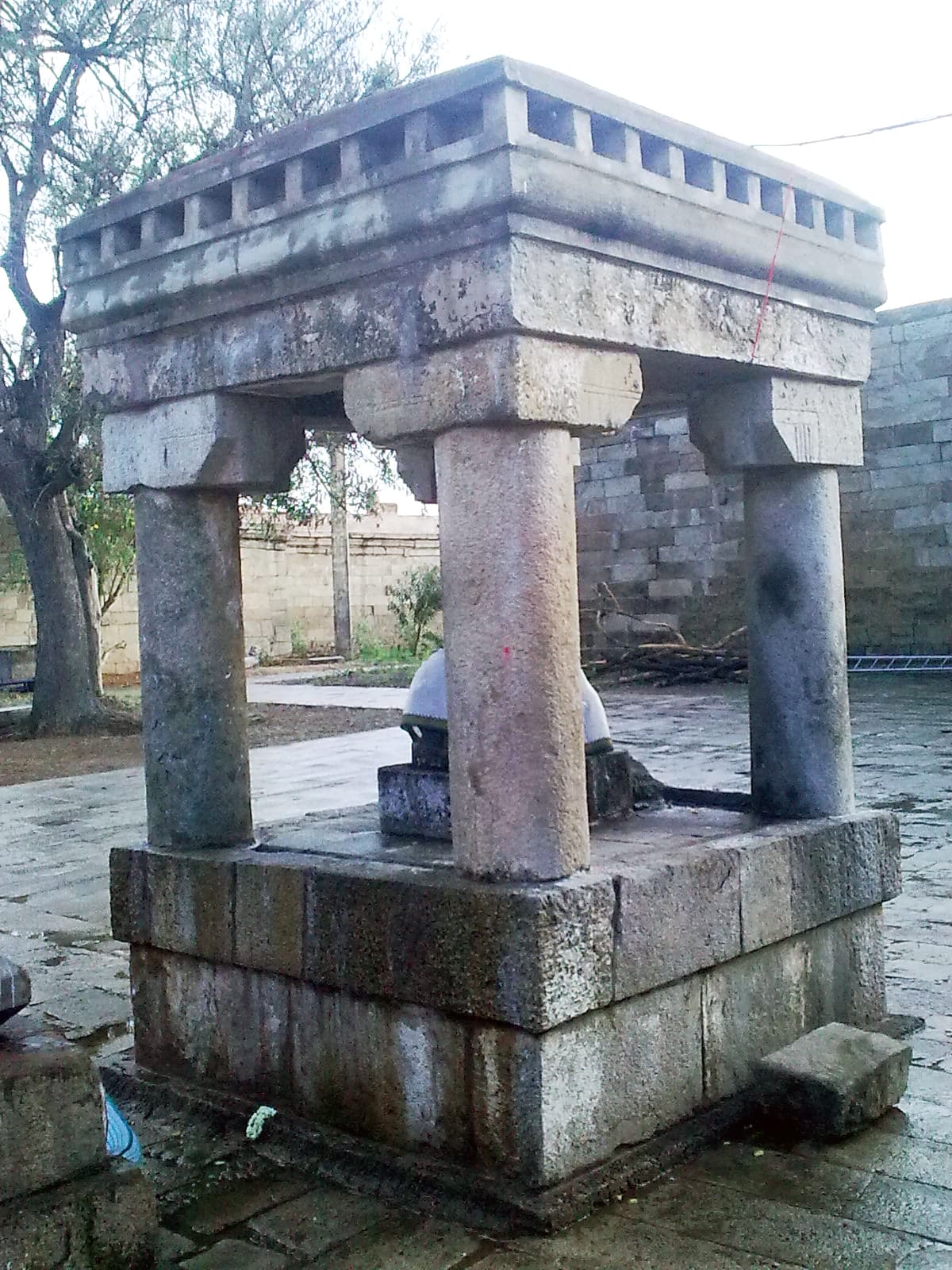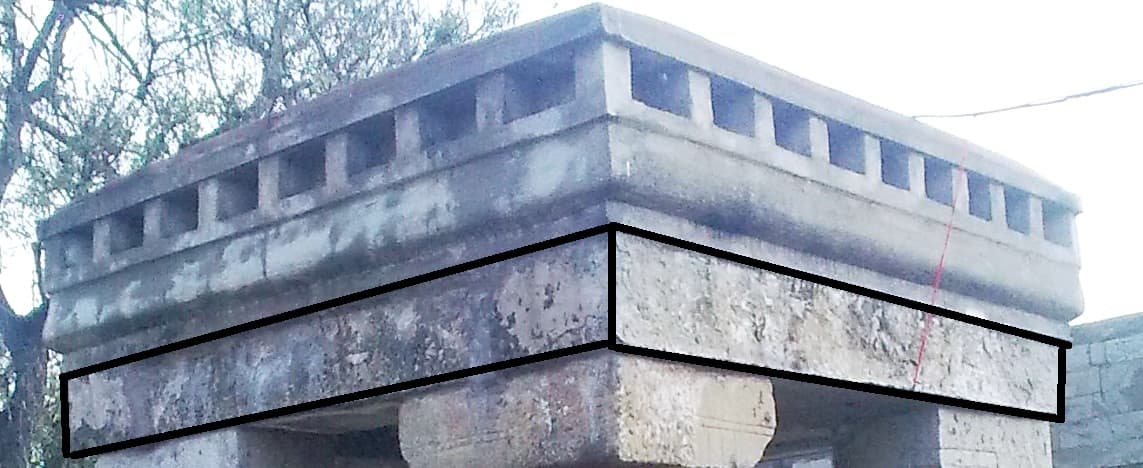- Design of a Granite/Stone Beam -


the beam of the structure shown in 1.jpg and 2.jpg has to be designed, without any tensile reinforcement.. the structure is essentially made of stone..
My doubts are:
1. Will the load of the slab be distributed to the surrounding beams as per fig.7 of IS 456 - 2000 ?
2. knowing the total load of the slabs situated on top of the beam, is it possible to determine the depth of the beam section required to resist the load, using only the Bending equation?? (the values of compressive strength of the stone material is known)
3. let us assume that the load of the slabs is 500 kN (which is found by finding the total volume and multiplying by its unit weight), we know that this 500 kN is acting over the top surface area of the beam.. how do I convert this load into a UDL acting over the span of the beam ???
P.S. I'd also like to get some suggestions on the design of this beam element using only stone.. it is known that only the load transfer is only by compression
Replies
-
 Kaustubh KatdareAre our Civil Engineers reading this? 😀
Kaustubh KatdareAre our Civil Engineers reading this? 😀 -
 J. Guru Prasanna
J. Guru Prasanna
guess not.. but I hope they'll be doing it in a whileThe_Big_KAre our Civil Engineers reading this? 😀 -
 Alvord12Are you assuming that the 500 KN acts as a point load on the center of the beam? Also, I'm not too sure about using the IS 456:2000 for construction involving stone/granite. The maximum bending moment formula was found with research on concrete, can't say that the same can be applied to stone/granite.
Alvord12Are you assuming that the 500 KN acts as a point load on the center of the beam? Also, I'm not too sure about using the IS 456:2000 for construction involving stone/granite. The maximum bending moment formula was found with research on concrete, can't say that the same can be applied to stone/granite.
These are just my thoughts, feel free to correct me if you think differently! 😀
Edit: Yup, just confirmed this with my friend, you cannot use IS 456:2000. You'll need to use IS 3316:1974 for Structural Granite. You might also want to check #-Link-Snipped-#. -
 J. Guru PrasannaThanks for your reply..
J. Guru PrasannaThanks for your reply..
500kN is not a point load acting on the beam.. the calculated value of UDL on the beam (entire span) is approximately 14.5 kN per sq.meters..
I feel we can use the bending equation M=fZ (M-moment, f-stress, z-section modulus) for any beam since we use the same equation for concrete as well as for steel... but i'm not sure with my answer
and could you please upload IS 3316 here ? (I'm unable to find a pdf on the net)
thanks in advance -
 Alvord12Yeah, I asked my professor about the bending equation case, he says it is possible to use that equation. The equation is like; Stress/y = M/I = E/R; So, assuming that y = d/2 where d is the depth of the beam, you can calculate the the depth if you know the permissible stress for Granite/Stone.
Alvord12Yeah, I asked my professor about the bending equation case, he says it is possible to use that equation. The equation is like; Stress/y = M/I = E/R; So, assuming that y = d/2 where d is the depth of the beam, you can calculate the the depth if you know the permissible stress for Granite/Stone.
Else you could use a UTM to calculate the value of 'E' for the type of stone you will be using and derive the value of the radius of curvature for the same.
As for the IS code, I'll check back with my friend if he has one. 😀 -
 J. Guru PrasannaThank you
J. Guru PrasannaThank you -
 J. Guru Prasanna
J. Guru Prasanna
I got the IS 3316.. #-Link-Snipped-#Alvord12Are you assuming that the 500 KN acts as a point load on the center of the beam? Also, I'm not too sure about using the IS 456:2000 for construction involving stone/granite. The maximum bending moment formula was found with research on concrete, can't say that the same can be applied to stone/granite.
These are just my thoughts, feel free to correct me if you think differently! 😀
Edit: Yup, just confirmed this with my friend, you cannot use IS 456:2000. You'll need to use IS 3316:1974 for Structural Granite. You might also want to check #-Link-Snipped-#.
but nothing related to the load distribution has been mentioned there..
is there anyother code that i should use for getting the load distribution or can I just assume the same as in IS 456 for concrete ?? -
 J. Guru PrasannaIt has been concluded that "the granite beam cannot be designed by any approximate method".. the loads acting on the structure are to be calculated and the required depth has to be obtained by a trial and error method alone.. or an experienced engineer could give a proper span to depth ratio which can be used to find out the depth..
J. Guru PrasannaIt has been concluded that "the granite beam cannot be designed by any approximate method".. the loads acting on the structure are to be calculated and the required depth has to be obtained by a trial and error method alone.. or an experienced engineer could give a proper span to depth ratio which can be used to find out the depth.. -
 s p guptaSir hw can I get the latest is code for my personal information about civil engineering
s p guptaSir hw can I get the latest is code for my personal information about civil engineering
You are reading an archived discussion.
Related Posts
Would like to know of the M.Tech Programme being offered at Jain University, Bangalore.
How is the overall programme, labs, faculty, placements and future.
what is latch and flip-flop?
what is a signal?
what is a clock signal?
what is a buffer?
what is synchronous and asynchronous circuit?
I read various articles and research paper about voice recongnization and I got concept about converting voice to text and text to voice.
But I stuck in this project what...
please help me to finalize my final year project in data mining
I am currently working in Qatar with MEP contracting company as Techno Comercial Manager
